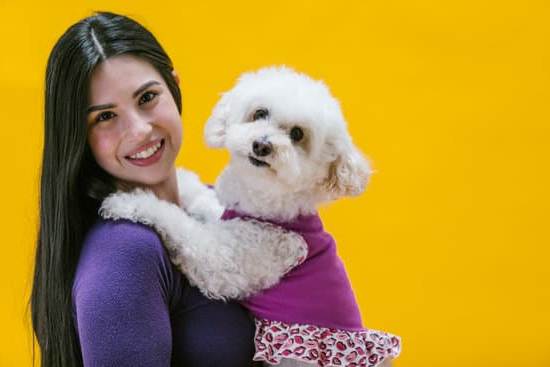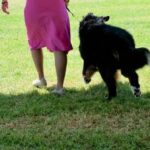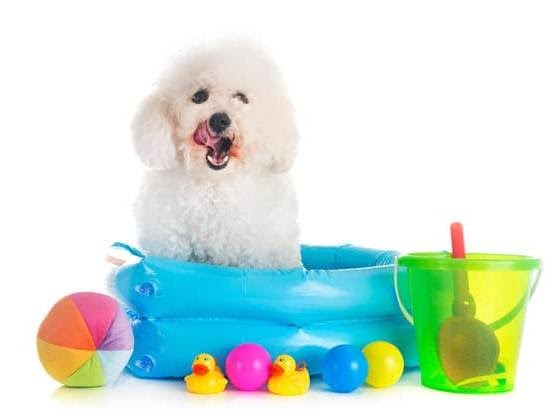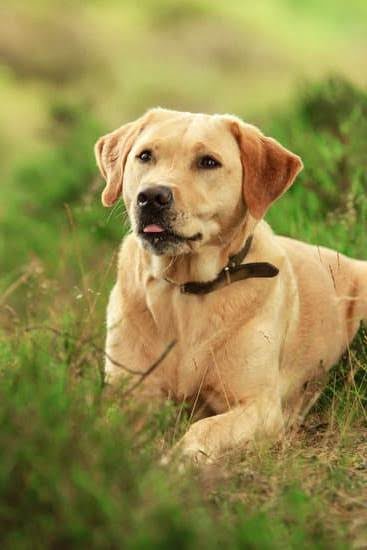Dogs are naturally curious and sociable animals, which can make it challenging to train them to ignore distractions. However, with the right techniques and consistent training, it is possible to help your furry companion stay focused in various environments. In this article, we will explore effective methods for training your dog to ignore distractions, allowing you to strengthen their obedience and improve their behavior.
Canine behavior and attention span play a crucial role in how well a dog can ignore distractions. Understanding these factors is essential for developing an effective training plan. By learning about what triggers your dog’s attention and how long they can stay focused on a task, you can tailor your training approach to suit their needs.
Identifying common distractions for dogs is the first step towards successfully training them to ignore such stimuli. Whether it’s other animals, loud noises, or food aromas, recognizing what captures your dog’s interest will help you prepare targeted training sessions. By acknowledging the specific distractions that challenge your dog the most, you can create a structured plan that addresses those issues directly.
Identifying Common Distractions for Dogs
Dogs, like humans, are susceptible to distractions in their environment. Identifying common distractions for dogs is essential when trying to train your pet to ignore them. Common distractions for dogs include other animals, loud noises, unfamiliar scents, and even their owner’s behavior. Understanding these distractions is the first step in addressing them during training sessions.
When it comes to training a dog to ignore distractions, it’s important to start with a solid foundation through basic obedience training. This includes commands such as sit, stay, and come. These commands provide the groundwork for building focus and control in your dog. Once these basics are in place, you can then begin implementing positive reinforcement techniques to encourage focus despite distractions.
Positive reinforcement involves rewarding your dog with treats or praise when they successfully ignore a distraction and pay attention to you instead. This helps them understand that focusing on you brings positive outcomes. Gradually increasing the level of distractions during training sessions is also crucial. Start with mild distractions and gradually progress to more challenging ones as your dog becomes more adept at ignoring them.
In the initial stages of training, incorporating desensitization and counter-conditioning methods can be highly effective. This involves exposing your dog to the distraction at a low intensity while providing positive experiences or rewards, gradually increasing the intensity over time. Additionally, regular mental and physical exercise can help promote focus by reducing excess energy and anxiety in dogs.
| Common Distractions for Dogs | Training Approach |
|---|---|
| Other animals, loud noises, unfamiliar scents | Positive reinforcement techniques |
| Owner’s behavior | Desensitization and counter-conditioning methods |
Establishing a Solid Foundation Through Basic Obedience Training
Before diving into the specific techniques for training your dog to ignore distractions, it’s important to establish a solid foundation through basic obedience training. This means teaching your dog essential commands such as sit, stay, come, and heel. These commands form the building blocks for more advanced training and will be crucial in helping your dog maintain focus in distracting environments.
Basic obedience training not only teaches your dog valuable skills but also helps create a strong communication channel between you and your furry companion. By laying down this groundwork, you are setting the stage for successful distraction training.
To train your dog to ignore distractions effectively, it’s vital to start with the basics and ensure that they have mastered obedience commands in low-distraction environments before moving onto more challenging scenarios. In these early stages of training, consistency is key. Use positive reinforcement techniques such as treats and praise to reinforce good behavior when your dog follows commands correctly. This will help them associate focusing on you with positive outcomes.
Once your dog has a strong grasp of basic obedience commands, you can begin introducing distractions gradually during training sessions. The goal is to expose them to different stimuli in a controlled manner and teach them how to remain focused on their tasks despite these distractions. Understanding canine behavior and attention span will also play a crucial role in this process as you tailor your training methods to suit your individual dog’s needs.
Implementing Positive Reinforcement Techniques to Encourage Focus
When it comes to training your dog to ignore distractions, positive reinforcement techniques can be incredibly effective. Dogs respond well to rewards and praise, so using these methods can help encourage focus and deter attention from common distractions. One of the most important aspects of this approach is consistency. By consistently rewarding your dog for ignoring distractions and maintaining focus, you are reinforcing the behavior you want to see.
One popular positive reinforcement technique is clicker training. This method involves using a clicker to mark the precise moment when your dog does something right, followed by a reward. Over time, your dog will associate the sound of the click with receiving a treat, which will encourage them to remain focused on you rather than on potential distractions. Additionally, using high-value treats during training sessions can further motivate your dog to pay attention and ignore outside stimuli.
It’s important to remember that every dog is different, so what works for one dog may not work for another. Pay attention to how your dog responds to different types of rewards and adjust your training techniques accordingly. The key is to make the act of focusing on you more rewarding and enjoyable for your dog than giving in to distractions.
| Positive Reinforcement Technique | Effectiveness |
|---|---|
| Clicker Training | Highly effective for many dogs; reinforces precise behaviors |
| High-Value Treats | Motivates dogs to pay attention during training sessions |
Gradually Increasing the Level of Distractions During Training Sessions
After establishing a solid foundation through basic obedience training, the next step in training your dog to ignore distractions is to gradually increase the level of distractions during training sessions. This process involves exposing your dog to various distractions in a controlled environment and teaching him to remain focused on you despite the presence of these distractions. Here are some effective ways to achieve this:
- Start with minimal distractions: Begin by practicing in a quiet and familiar environment where there are minimal distractions. This could be indoors or in your backyard where your dog feels comfortable and at ease.
- Introduce mild distractions: Once your dog has mastered focusing on you in a low-distraction environment, start introducing mild distractions such as gentle sounds, mild movements, or the presence of familiar objects. Use positive reinforcement techniques such as treats or praise to encourage your dog to maintain focus.
- Gradually increase the level of distractions: As your dog becomes more proficient at ignoring mild distractions, slowly introduce higher levels of distraction. This could include louder sounds, more movement around him, or the presence of unfamiliar people or animals. It is important to progress at a pace that is appropriate for your individual dog’s comfort and confidence levels.
By gradually increasing the level of distractions during training sessions, you can effectively teach your dog to remain focused on you regardless of the surrounding stimuli. Remember to be patient and consistent throughout this process, and always use positive reinforcement to encourage desired behavior. With time and practice, your dog will become more adept at ignoring distractions and maintaining his focus on you.
Using Desensitization and Counter-Conditioning Methods
When it comes to training a dog to ignore distractions, desensitization and counter-conditioning methods can be incredibly effective. These techniques work by gradually exposing the dog to the distractions they struggle with, while simultaneously changing their emotional response to those stimuli.
Understanding Desensitization
Desensitization involves exposing the dog to the distraction at a low intensity and gradually increasing the exposure over time. For example, if a dog is easily distracted by other dogs on walks, start by having them observe other dogs from a distance where they remain calm and focused. As they become more comfortable, slowly decrease the distance between them and the other dogs.
Implementing Counter-Conditioning Techniques
Counter-conditioning involves changing the dog’s emotional response to distractions by pairing them with something positive. For instance, if a dog gets anxious around loud noises, play calming music or provide treats whenever the noise occurs. Over time, the dog will associate those sounds with positive experiences rather than fear or anxiety.
The Combined Approach
Combining desensitization and counter-conditioning can be particularly effective in helping dogs overcome specific distractions. By gradually exposing them to the distraction while providing positive reinforcement, you are not only teaching your dog to ignore the distraction but also changing their emotional response towards it.
By understanding these methods and implementing them consistently, you can effectively train your dog to ignore distractions and remain focused on you during various situations. Keep in mind that patience and consistency are key when using these techniques for training your canine companion.
Incorporating Regular Mental and Physical Exercise to Promote Focus
Dogs, like humans, benefit from regular mental and physical exercise to promote focus and concentration. In this section, we will discuss the importance of incorporating these exercises into your dog’s routine to help in training them to ignore distractions.
Mental Exercises
One way to train your dog to ignore distractions is by engaging them in mental exercises. This can include puzzle toys, interactive games, or training sessions that challenge their cognitive abilities. By keeping their minds active and engaged, you can help them develop the ability to focus on tasks despite potential distractions.
Physical Exercise
In addition to mental exercises, regular physical activity also plays a crucial role in promoting focus in dogs. A tired dog is often a well-behaved and attentive dog. Daily walks, runs, or playtime can help burn off excess energy and reduce the likelihood of restless behavior during training sessions.
Combining Mental and Physical Exercise
To achieve the best results in training your dog to ignore distractions, it’s important to strike a balance between mental and physical exercise. Combining both types of activities can help create a well-rounded approach to promoting focus and attention in your canine companion.
By incorporating regular mental and physical exercise into your dog’s routine, you can set them up for success when it comes to training them to ignore distractions. These activities not only contribute to overall health and well-being but also provide valuable opportunities for reinforcing positive behaviors during training sessions.
Troubleshooting Tips for Dealing With Stubborn Distractions
Training a dog to ignore distractions can be challenging, especially when dealing with stubborn distractions. Here are some troubleshooting tips to help you address this issue effectively:
1. Identify the root cause of the distraction: Understanding why your dog is being distracted can help you address the issue more effectively. Is it due to fear, excitement, or lack of training? Once you identify the cause, you can tailor your training approach to address it.
2. Use targeted desensitization and counter-conditioning: If your dog is consistently distracted by a specific stimulus, such as other dogs or loud noises, you can use desensitization and counter-conditioning techniques to help them overcome their reactivity. Gradually expose your dog to the distracting stimulus at a distance and reward calm behavior, gradually decreasing the distance over time.
3. Maintain consistency in training: Consistency is key when training a dog to ignore distractions. Ensure that everyone interacting with your dog is on board with the training plan and uses consistent cues and commands. Inconsistency can lead to confusion for your dog and hinder their progress.
4. Seek professional help if needed: If you find that despite your best efforts, your dog continues to struggle with ignoring distractions, consider seeking professional help from a certified dog trainer or behaviorist. They can provide personalized guidance and support based on your dog’s specific needs.
By implementing these troubleshooting tips and remaining patient throughout the process, you can effectively train your dog to ignore distractions and improve their focus during training sessions and everyday life.
Creating a Consistent and Structured Training Routine
Start by designating specific times each day for training sessions. This could be in the morning before breakfast or in the evening before dinner. By incorporating training into your daily routine, you are integrating it as a normal part of your dog’s day-to-day life.
Additionally, consistency also applies to the location of training sessions. Find a quiet and familiar space where there are minimal distractions. This will help your dog focus better and reduce the likelihood of them being overwhelmed by external stimuli. As your dog becomes more adept at ignoring distractions in this controlled environment, gradually introduce new locations with increased levels of distractions.
Consistency also extends to the methods used during training sessions. Ensure that everyone involved in training is on the same page and uses consistent commands and techniques. This will prevent confusion for your dog and make it easier for them to understand what is expected of them.
By creating a consistent and structured training routine, you are setting your dog up for success in learning how to ignore distractions. This approach provides a solid foundation for their learning process and fosters an environment where they can thrive.
Celebrating Progress and Maintaining Patience Throughout the Process
As you work on training your dog to ignore distractions, it’s important to remember that progress takes time and patience. It’s essential to celebrate every small step forward and acknowledge the hard work both you and your furry friend have put in. Training a dog to ignore distractions is no easy feat, but with dedication and consistency, it is achievable.
One crucial aspect of this process is understanding canine behavior and attention span. By recognizing what distracts your dog and how long they can maintain focus, you can tailor your training methods to suit their needs. Identifying common distractions for dogs is the first step towards effectively teaching them to ignore these stimuli.
Incorporating regular mental and physical exercise into your dog’s routine can also help promote focus during training sessions. Utilizing positive reinforcement techniques, such as treats or praise, will encourage them to stay focused on their tasks despite any potential distractions.
Remember that creating a consistent and structured training routine will ultimately lead to success in teaching your dog how to ignore distractions. With all of these factors in mind, it’s important to remain patient and celebrate every bit of progress made along the way.
Frequently Asked Questions
How Do I Train My Dog to Be Less Distracted?
Training a dog to be less distracted requires patience and consistency. Start by working on basic commands in a quiet environment, then gradually introduce more distractions. Rewarding focus and attention will help reinforce the desired behavior.
How Do You Teach a Dog to Ignore?
Teaching a dog to ignore can be done through positive reinforcement training. Start by teaching the “leave it” or “ignore” command and use high value treats to reward them for ignoring distractions. Practice consistently in various environments.
How Can I Improve My Dog’s Recall With Distractions?
Improving your dog’s recall with distractions takes time and practice. Start by reinforcing a strong recall in low distraction settings, then gradually increase the level of distractions while ensuring a high-value reward for coming when called. Consistent practice is key to success.

Welcome to the blog! I am a professional dog trainer and have been working with dogs for many years. In this blog, I will be discussing various topics related to dog training, including tips, tricks, and advice. I hope you find this information helpful and informative. Thanks for reading!





